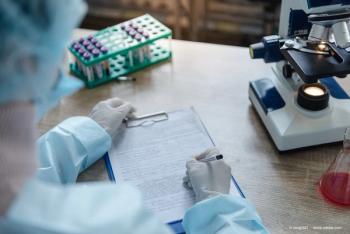
Electroretinography detects early glaucoma signs
Lesions appear in both outer and inner retinal layers in the early onset of glaucoma, with the most pathological change in neurophysiological processes affecting the photoreceptors cells of the outer layer. Such findings could aid in early diagnosis of the disease.
Lesions appear in both outer and inner retinal layers in the early onset of glaucoma, with the most pathological change in neurophysiological processes affecting the photoreceptors cells of the outer layer, researchers say.
Such findings could aid in early diagnosis of the disease, writes L.M. Stotska of the Filatov Eye Disease and Tissue Therapy Institute in Odessa, Ukraine, and colleagues in Clinical Ophthalmology.
Although glaucoma is common, much about its pathogenisis remains poorly understood. In fact, the term glaucoma could refer to multiple distinct diseases with similar symptoms.
More glaucoma:
Until recently, clinicians have focused on changes in the optic nerve head and visual field defects in measuring the progress of the disease.
Although researchers have identified risk factors, they have not yet succeeded in finding ways to prevent glaucoma from occurring.
Recent research has uncovered important information about the retina in patients with primary open-angle glaucoma (POAG), including the accelerated death of ganglion cells in the retina and retinal axons.
And newer methods of investigation, including scanning laser polarimetry and optical coherence tomography, have revealed structural changes at different levels in the retina and optic nerve.
These approaches allow a better understanding of the morphology and functioning of the retina and increase the possibilities of detecting patholology in pre-clinical stages.
In hope of contributing to this knowledge, Stotska and colleagues studied 298 eyes of 156 patients with POAG or suspected pre-POAG. The group consisted of 81 women and 75 men, with an average age of 56 years. They excluded patients with absolute glaucoma and high ametropia.
More retina:
The researchers divided this group into four subgroups: 42 patients, 84 eyes with suspected pre-glaucoma; 48 patients, 96 eyes with initial glaucoma; 36 patients, 56 eyes with developed glaucoma; and 30 patients, 53 eyes with advanced glaucoma. The group with suspected pre-glaucoma consisted of patients who findings were not within the normal ranges by 1 or 2 indices.
The researchers compared these groups to a control group of 60 eyes in 30 patients without POAG, who were similar in age, ametropia rate, and somatic diseases.
The eyes all underwent visometry, tonometry, tomography, refractometry, biomicroscopy, direct and reverse ophthalmoscopy, optical coherence tomography, rheophthalmography, visual field assessment and electroretinography.
In the visual field assessment, they used the mean deviation of differential light sensitivity in decibels of the retina, defined as the difference between test findings and age norms for each visual field point. And they used the visual field index percentage, which displays the state of total visual function compared to age norms, with the norm defined as 100%.
They recorded both full-field electroretinography (the bioelectrical response of the entire retina) and flicker electroretinography (the response of the cones).
The researchers found significant differences among several of the groups.
More glaucoma:
They used Spearman's rank correlation coefficients to analyse the electroretinography records. In suspected pre-glaucoma patients, this measurement was 0.53 between local electroretinography b-wave and mean deviation parameters, -0.48 between full-field electroretinography a-wave and computed perimetry mean deviation, and 0.56 between the initial negative deflection (N1) and the initial positive deflection (P1) parameters and the mean deviation.
In initial glaucoma patients, the Spearman's rank correlation coefficient was 0.32 between a-wave parameters according to full-field electroretionography records and mean deviation differential light retinal sensitivity parameters. The Spearman's rank correlation coefficient was -0.33 between flicker electroretinography Ï1 and visual field index parameters.
In eyes with developed glaucoma, the Spearman's rank correlation coefficient was -0.46 between full field electroretinography a-wave and intraocular pressure, -0.12 between parameters of full field electroretinography b-wave and optical nerve excavation width, 0.51 between full field electroretinography b-wave intraocular pressure and 0.41 between flicker electroretinography P1 and intraocular pressure.
The researchers did not find any correlation between full field electroretinography and electroretinography records or clinical characteristics of visual analyser functional states in patients with advanced glaucoma.
Recent:
Negative a-wave potential displays responses in photoreceptors cells of the outer retinal layer. Positive b-wave potential characterises bioelectrical activity of the second order neurons of the retina (bipolar disorder cells with the possible contributions of horizontal and a machine cells) and Muller glia cells. But only cones can respond to stimulation of 30 Hz or more.
These readings suggest that initial glaucoma patients have lesions in both the outer and inner retinal layers, including cone elements.
As the glaucoma advanced, the researchers found more correlations indicating pathological changes that result in a decrease of differential light sensitivity of the retina, central visual acuity defects, an increase in intraocular pressure and a decrease in optic nerve excavation width.
Newsletter
Keep your retina practice on the forefront—subscribe for expert analysis and emerging trends in retinal disease management.












































